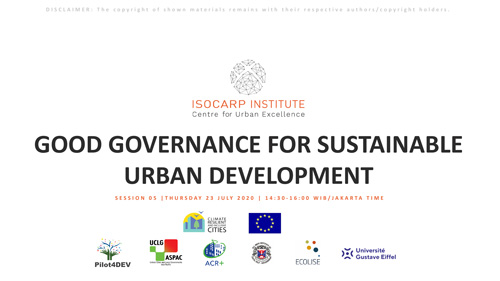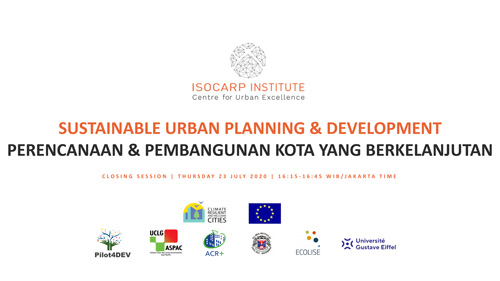The Urban Analysis Report is a 3-month study of ten CRIC’s pilot cities carried out by a panel of urban experts. The study sought to identify characteristics of each city and climate-related existing policies and policy gaps while providing recommendations to pilot cities.
Pilot cities Urban Analysis Reports
Policy Briefs for Pilot Cities
The policy briefs were redacted by CRIC partners in an effort to provide condensed information on the pilot cities, policy analysis and recommendations as well as tool suggestions to tackle current challenges.
Training on urban sustainable development
knowledge exchange
With an urban growth averaging 4,4% annually, Indonesia experiences the highest rate of urbanization in Asia (higher than in India and China). It is predicted that 68% of the population will live in cities in the next ten years[1]. Urban population densities exceed 15,000 habitants/km² in cities like Jakarta and more than 30,000 habs/km² in some inner-city areas. Cities are hardly hit by climate change, although they could be seeds for solutions. Cities like Jakarta are sinking below sea level and could be expected to sink by 2050. Countries like Vietnam (36% of urban population) and the Philippines (45%) concentrate large urban areas, with fast growing centres[2]. Urban areas host most of the vulnerable populations, as well as vital and social infrastructure, and local governments have increased pressure to develop services, infrastructure, employment (U.N. Habitat). Hundreds of millions of people in poorer urban areas are hit by pockets of deprivation, when not lack of basic infrastructure (such as water and sanitation). Problems will worsen when the most fragile territories could be affected by rising sea levels, flooding, landslides, toxic peaks of air pollution, typhoons alerts, storms, or periods of more extreme heats and droughts related to climate change. Cities and local governments are increasingly recognized as key actors in addressing climate challenges and SDGs.
This page is dedicated to knowledge exchange for cities.
Files

A unique cooperation between cities, officials, civil society organizations, and academics towards resilient and inclusive cities.
Menu
Co-funded by EU

This project is co-funded by the European Union
Contact
Hizbullah Arief
hizbullah.arief@uclg-aspac.org
Pascaline Gaborit
pascaline@pilot4dev.com






